Imagine being assigned a patient from the ER, that’s transferred to the fifth floor – when all the other patients you’re rounding on today are on the second floor. Now it’s your responsibility — even though that patient is nowhere near your primary unit.
Without insight into where ER patients are likely to go, hospitalists are constantly sent across floors, disrupting continuity and wasting valuable time.
Disorganized geography increases physician fatigue, undermines efficiency, and erodes the patient-caregiver relationship.
What if we could predict where an ER patient will be admitted — and assign them as if they’re already there?
Hospital Bed Planning – Predicting Where Patients Will Be Transferred
I’ve heard from hospitalists that physicians were becoming frustrated during their seven-day shifts because their rounding assignments became less geographically concentrated over time. One of the main reasons for this is because as ER patients were admitted, they were often placed in beds outside of the physician’s primary geographic region, leading to inefficient rounding and fragmentation of geographic care.
Here’s what happens: When a patient starts in the ER and is then transferred out of the ER to another unit, they will need to be assigned to a hospitalist to be rounded on. But what often happens is that ER patients get distributed all over the hospital and then rounding hospitalists have to see patients outside their primary geography in order to preserve continuity.
Without predictive assignment, the scenario might look like this: A patient in the ER gets assigned to Hospitalist A and then is moved to a first-floor room. But Hospitalist A is already covering the fifth floor and now has to move between floors.
Breakdowns in hospitalist geography not only hurt efficiency, they increase patient handoffs and burnout.
But if you can predict where a patient will end up – then you can proactively assign them to the right hospitalist for that geography, to help hospitalists maintain geographic rounding.
The Solution: Predictive Hospital Bed Planning
Customers of ours like Texas Health and Rochester are using our patient assignment solution, Assign, to automatically create their morning assignments while preserving continuity and geography for hospitalists. But now, they’re leveraging the predictive measures for hospital bed planning.
Now, they fill in a field in their EHRs such as “pre-assignment location” or “bed request status” to predict where ER patients are likely to be admitted. This is a default feature in Epic that needs to be enabled in the Epic EHR system. The Registration team uses a drop-down menu within Epic that includes only valid, available unit locations. These options are directly mapped to Medaptus thanks to our Epic integration, ensuring accurate data flow and minimizing manual entry errors (via a HL7 Data feed combined with your existing patient assignment rules in medaptus Assign).
By pulling this predictive bed information into Assign, they’re able to correctly assign a patient to the right hospitalist, even before the patient has left the ER.
For example, if a patient is in the ER but is likely going to Floor 2, Medaptus can assign that patient to a Floor 2 doctor. When the patient does move, everyone’s aligned — no reshuffling needed.
When the registration team is inputting this predictive location data correctly, the entire hospital medicine operation benefits.
Maintaining Geographic Rounding
Using this information for proactive assignment ensures hospitalists are aligned to the right geography before the patient even moves — maintaining continuity and minimizing cross-floor disruptions.
Predictive hospital bed planning was something that a few of our customers tried to do manually before they were using Assign – but it was a very labor-intensive and difficult process, often requiring spreadsheets and constant communication, which was prone to errors and inefficiencies.
Final Notes
Your EHR teams and registration staff play a critical role in capturing and leveraging predictive location data in real-time.
Predictive tools reduce misalignment and preserve doctor-patient continuity — a key driver of satisfaction for hospitalists and patients. This shift toward tighter unit-based assignment is powered by data, not manual updates, which makes it adaptable to everything happening in real-time.
This strategy flips the traditional model — instead of reacting to where a patient is, clinicians are matched based on where the patient is going.
Where in your hospital are patients going — and how early do your systems know it? Is your assignment system reacting to patient moves, or staying one step ahead?
Get the latest updates and news delivered to your inbox.
Subscribe to our newsletter today.





